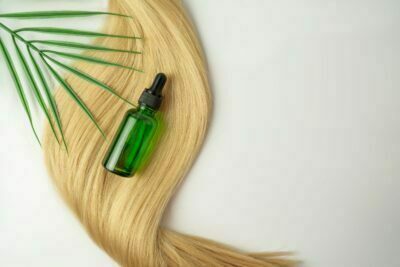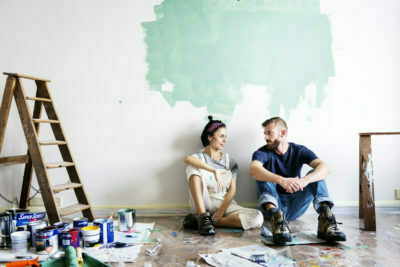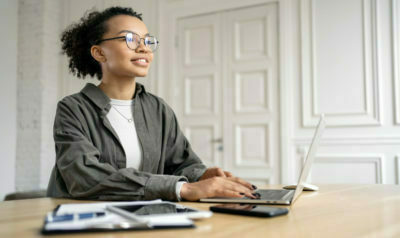Throughout history, the hemp plant has been revered and utilized for its versatile applications across multiple industries. From textiles to health products, hemp’s adaptable nature has continued to captivate innovators and consumers alike. In recent years, the resurgence of hemp products and a growing understanding of its myriad uses has positioned hemp as an environmentally friendly and sustainable alternative to many mainstream materials and products.
In the realm of personal health and wellness, hemp-derived products have seen a significant uptick in popularity. Products like hemp roll-on pain relief solutions offer consumers natural alternatives to over-the-counter pain relief methods, showcasing the plant’s therapeutic potential. As we delve further into the expansive world of hemp applications, it’s crucial to understand its transformative impact across various sectors. Keep reading to learn more!
Hemp in Textile Production
Hemp has been used in textile production for millennia, making it one of the oldest types of cloth in existence. The fibers derived from hemp are strong, durable, and resilient against wear and tear. Notably, these fibers don’t degrade as quickly as some other materials, like cotton.
In the textile sector, hemp is also celebrated for its eco-friendly cultivation practices. The plant requires minimal pesticides, and its rapid growth cycle ensures soil health by preventing nutrient depletion. As concerns grow over the environmental impact of traditional textile production, many manufacturers and consumers are turning to hemp as a sustainable alternative, which has been approved by the drug administration.
Hemp in Nutrition and Health

When it comes to nutrition, hemp seeds are powerhouses. They are rich in essential fatty acids, proteins, vitamins, and minerals. Omega-3 and Omega-6 fatty acids, which are abundant in hemp seeds, are vital for brain health, immune system function, and overall inflammation reduction.
In addition to nutritional benefits, hemp-derived products are now at the forefront of several therapeutic applications. CBD oil, a non-psychoactive compound extracted from hemp, has gained immense popularity for its potential in alleviating a host of ailments ranging from anxiety to chronic pain.
Hemp as Building Material
One might not immediately think of hemp when considering construction materials, but it offers exciting potential in this domain. Hempcrete is a biocomposite made from the inner woody core of the hemp plant mixed with lime. This material is lightweight, breathable, and offers excellent thermal insulation.
Besides its performance attributes, Hempcrete is also sustainable. It acts as a carbon sink by absorbing and trapping CO2, thereby mitigating the greenhouse effect. As the construction industry grapples with the challenges of reducing its carbon footprint, hemp provides a green solution that’s tough to beat.
Hemp in Paper Production
Historical records indicate that hemp was used to make paper as far back as 200 BCE in China. The strong fibers of the hemp plant lend themselves well to paper production. In comparison to tree-based paper, hemp paper is more durable, less prone to yellowing, and requires fewer chemicals during the manufacturing process.
Given the rate at which forests are being depleted for paper production, there’s a pressing need to turn to sustainable alternatives. Hemp, with its quick growth cycle and superior paper quality, offers a promising alternative to traditional tree-derived paper.
Hemp in Biofuel Production
As the global community continues its pursuit of renewable energy sources, hemp has emerged as a potential biofuel candidate. The plant’s seeds can be processed to produce hemp biodiesel, while its stalk can be transformed into ethanol and methanol.
Biofuels derived from hemp are biodegradable and non-toxic. More importantly, they burn cleaner than fossil fuels, releasing fewer pollutants into the atmosphere. With growing concerns over the environmental and geopolitical ramifications of fossil fuel dependency, the need for sustainable alternatives like hemp-based biofuel becomes increasingly apparent.
The Environmental Aspect of Hemp
Beyond its direct applications, hemp has broader environmental benefits. Its cultivation can improve soil health by fixing nitrogen and breaking up compacted soil. Furthermore, it naturally resists many pests, reducing the need for harmful pesticides.
With its rapid growth rate, hemp also serves as an excellent carbon sink, absorbing more CO2 per acre than most plants. This attribute, coupled with its potential in creating biodegradable products and biofuels, positions hemp as a vital player in the drive towards a sustainable and green future.
Hemp in Cosmetics and Personal Care
The cosmetic industry is continually searching for natural ingredients that can enhance the quality of skincare and beauty products. In this quest, hemp oil has emerged as a valuable asset. Rich in vitamins, antioxidants, and essential fatty acids, hemp oil can provide a plethora of benefits for the skin. It is known to hydrate, nourish, and even reduce signs of aging.
Furthermore, due to its anti-inflammatory properties, hemp oil is being researched and integrated into products aimed at reducing acne, eczema, and other skin irritations. The omega-3 fatty acids found in hemp can reduce redness and inflammation, making it a suitable ingredient for sensitive skin types.
Hemp in the Food and Beverage Industry
Beyond the direct nutritional benefits of hemp seeds, the food and beverage industry has embraced hemp as a flavor enhancer and a health supplement. Hemp milk, for instance, has become a popular dairy alternative, offering a creamy texture and a nutty flavor without any lactose or dairy-related allergens.
Similarly, hemp seed oil, with its earthy taste, is being incorporated into salad dressings, dips, and even gourmet dishes. For those keen on baked goods, hemp flour offers a gluten-free alternative with a unique flavor profile that stands out in bread, muffins, and other pastries.
Hemp in Art and Craft

The versatility of hemp isn’t limited to industrial applications. Artists and craftsmen have employed hemp fibers in various forms of art. Hemp rope and thread, for instance, have been used in macramé, a form of textile produced using knotting techniques. Its durability ensures that these art pieces last longer than those crafted from more delicate materials.
Hemp paper, with its textured finish and rich history, has become a sought-after medium for artists working in calligraphy, printmaking, and watercolor painting. Its unique texture adds an extra dimension, elevating the final artwork.
Hemp in Agriculture
As an agricultural tool, hemp has a dual role—as a crop and as a means to enhance agricultural practices. Hemp’s dense growth can suppress weed growth, reducing the need for herbicides. Its deep roots prevent soil erosion, promote soil aeration, and help in the bio-remediation process, where the plant naturally detoxifies the soil by absorbing pollutants.
In crop rotation practices, hemp can play a crucial role in breaking disease cycles. Because of its rapid growth and dense canopy, it can outcompete common weeds, thus reducing the need for chemical weed control in subsequent crops. This not only improves soil health but also reduces the overall environmental footprint of agriculture.
Unraveling the Potential of Hemp
As we reflect on the many uses of hemp, several key takeaways emerge. This humble plant once stigmatized due to its association with its psychoactive cousin, marijuana, stands out as a beacon of sustainability and versatility. Whether it’s revolutionizing the textile industry, offering natural therapeutic solutions, or paving the way for eco-friendly construction and renewable fuels, hemp’s potential seems boundless. Embracing and promoting hemp’s diverse applications can lead not just to industrial innovation but also to a more sustainable and harmonious relationship with our planet.






